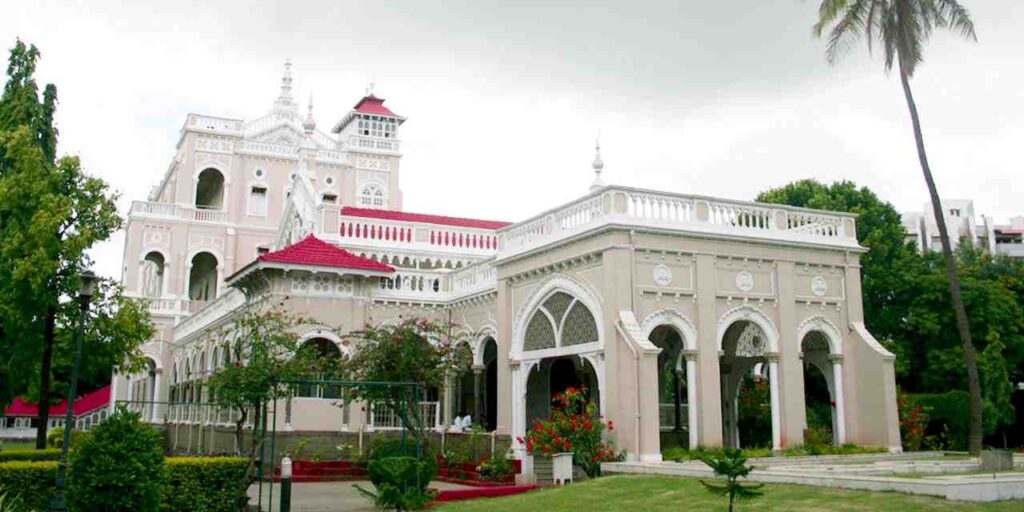Let’s Dive Into Prominent Heritage Sites From Pune

Let’s Dive Into Prominent Heritage Sites From Pune
World Heritage Day is an International Day for Monuments and Sites, observed every year on 18th April. This day is dedicated to celebrating and preserving our cultural and natural heritage.
23 April 2024
By Ishika Kumar
What is World Heritage Day?
World Heritage Day is an International Day for Monuments and Sites, observed every year on 18th April. This day is dedicated to celebrating and preserving our cultural and natural heritage. Ancient monuments and sites across the globe are not just architectural feats but also reflections of cultures and long past histories they represent. This special day encourages collaboration among individuals, communities, organisations, governments and countries to enhance awareness by promoting the conservation of these invaluable assets to humankind.
2024 Theme for World Heritage Day:
The theme for World Heritage Day in 2024 was “Discover and Experience Diversity.” It emphasises the variety and richness of our global heritage and celebrates its distinguishing factor whilst encouraging appreciation and exploration of the unique cultures the world has to offer.
Pune’s Rich Heritage:
Pune is home to various historical monuments that attract tourists and history enthusiasts alike. These include the Aga Khan Palace, known for its architectural beauty and immaculate preservation of history, and the Shaniwar Wada, famous for its robust-clenched fortifications and intricate yet massive gates.
Pataleshwar Caves and Temple, Lohagad Fort and Sinhagad Fort also match the level of majestic architecture and historical significance. Apart from the monuments of heritage value and glory, Pune’s heritage encapsulates several foods from places, libraries, festivals and a love for cinema and films. Apart from physical grandeurs, the grandiosity of Film Television Institute of India (FTII), Kayani Bakery’s Shrewsbury Biscuits, and Victory Theatre in Camp which marks the British era and nationalist movement, are all such examples which may not have made it to the UNESCO list of heritage sites but define Pune’s heritage by winning hearts of Punekars everywhere.
Roots:
The concept of a dedicated day to focus on monuments and sites was established in 1982 by the International Council for Monuments and Sites (ICOMOS) and subsequently approved by UNESCO in 1983. This initiative aims to bring together experts from a plethora of fields—including architecture, engineering and archaeology—to collaborate on preserving the world’s most significant sites. Since its inception, ICOMOS has grown to include nearly 10,000 members from over 150 countries across the globe.
Timeline of Historical Milestones:
-1959: The concept of protecting cultural and natural heritage gained global attention when UNESCO adopted the Convention for the Protection of World Cultural and Natural Heritage.
-1964: The Venice Charter was established, setting down principles for the conservation and restoration of historic monuments and sites.
-1982: ICOMOS proposed 18 April as the International Day for Monuments and Sites.
-1983: UNESCO officially endorsed this proposal, marking the first celebration of what would become known as World Heritage Day.
-1984: The initial sites were designated as part of the prestigious World Heritage List.
-2002: The observance was officially named World Heritage Day, tying it more closely by commemorating it to the UNESCO World Heritage List.
Significance:
World Heritage Day serves as a platform for people from different regions and backgrounds to share knowledge about their historical and cultural traditions. Events worldwide focus on the importance of protecting our shared heritage as global citizens today. Attracting tourists and cultural enthusiasts enhances the value of those sites and the stories they tell.
The World Heritage Volunteers (WHV) Initiative 2023:
The WHV initiative started in 2008. It mobilises young volunteers to engage in projects aimed at preserving World Heritage sites. In 2023, under the theme “Working on the Future”, numerous projects took place involving international volunteers and local communities to come together and uphold rejuvenation efforts for World Heritage sites. It also paves the way to becoming stakeholders in the global community and responsible global citizens.
Volunteering:
Those interested in volunteering can participate in various projects detailed in the World Heritage Volunteers 2023 Campaign. These offer opportunities to work directly with heritage sites, contributing to their preservation and gaining unique insight into the importance of global heritage.
Top Heritage Sites in India:
Some of India’s most revered heritage sites include:
1. The Taj Mahal: The most iconic symbol of love, built from white marble by Emperor Shah Jahan between 1631 and 1648 in Agra, Uttar Pradesh. There is continual restoration work to protect the marble from acid rain, climate change and fluctuating weather conditions but that does not stop tourists and locals from visiting the marvel.
2. Hampi: Situated in Karnataka, it was the flourishing capital of the Vijayanagara Empire during the 14th century. The expansive site is dotted with over 1,600 remains—temples, forts, scientific architecture, royal complexes and intricate carvings. Notable for the synthesis of Hindu temple styles and indigenous Vijayanagara designs, Hampi is epitomised by the still-active Virupaksha Temple.
3. Ajanta Caves: Located in Maharashtra, the Ajanta Caves are a series of 29 rock-cut Buddhist monuments dating from around the 2nd century BCE to the 6th century CE. They are celebrated for their detailed friezes and solid sculptures which rank among the most ancient art in India. They provide a window into the past with vivid murals and paintings depicting the life of Buddha and stories from the Jatakas. Rediscovered in 1819 after being concealed by jungles, these caves highlight the artistic and religious identity of ancient India.
Tentative UNESCO World Heritage sites listed for India:
UNESCO has also provided a tentative list of World Heritage Sites. They are updated frequently and this list was updated in 2024:
1. Mughal Gardens in Jammu and Kashmir: These gardens are a prime example of Mughal horticultural prowess, showcasing exquisite Persian-style landscaping.
2. Chilika Lake, Odisha: India’s largest coastal lagoon, renowned for its ever-changing ecosystem and diverse bird population.
3. Mountain Railways of India Extension, Various Locations: This extension highlights the ingenuity behind the historic mountain railways already noted by UNESCO to pass through several high-altitude places.
4. Maratha Military Architecture in Maharashtra: The numerous forts demonstrate the military genius and strategic expertise of the Maratha Empire.
5. Moidams – the Mound-Burial System of the Ahom Dynasty, Assam: These tomb mounds represent the distinct burial traditions of the influential Ahom dynasty of Assam.
6. Thembang Fortified Village, Arunachal Pradesh: It is a testament to the traditional communal lifestyle and defensive structures characteristic of the Monpa people.









